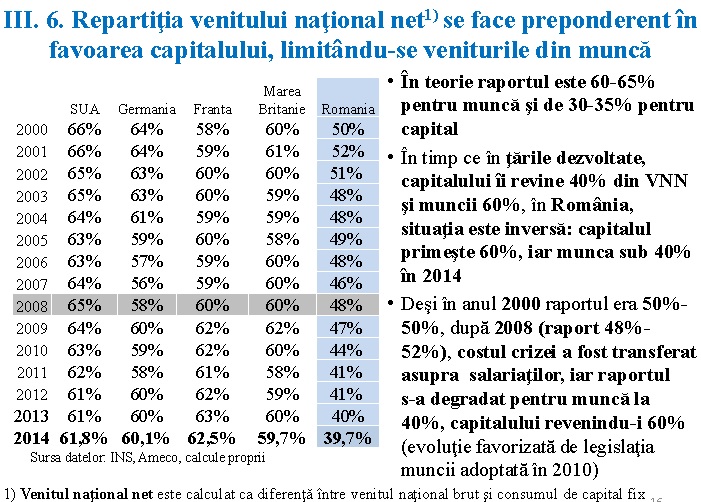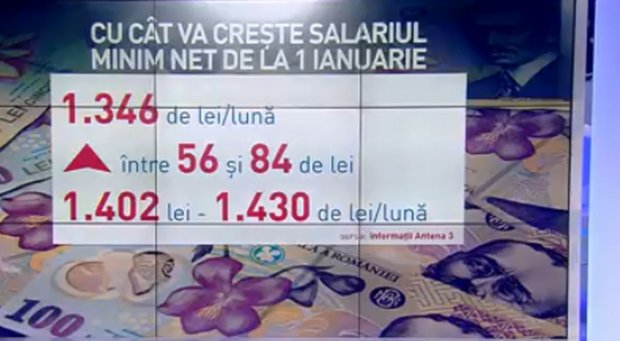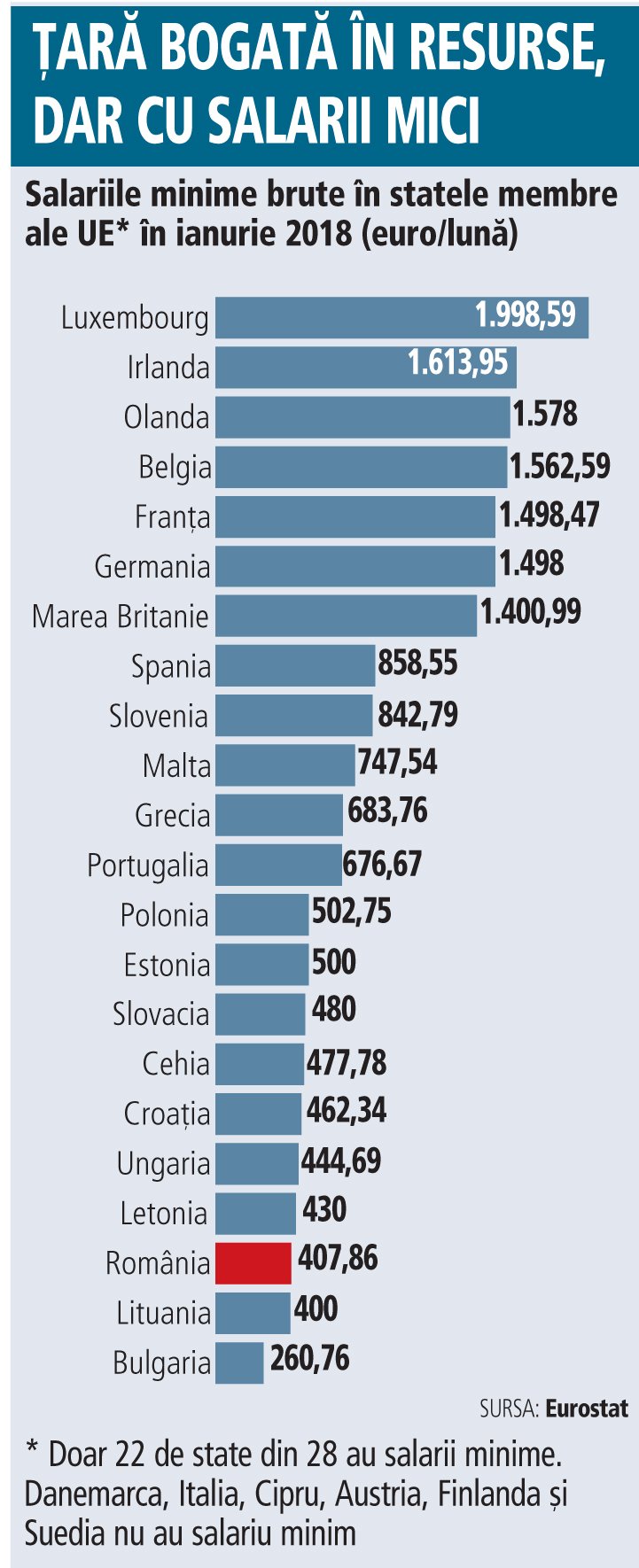


Privatisation of industry started with the 1992 transfer of 30% of the shares of some 6,000 state-owned enterprises to five private ownership funds, in which each adult citizen received certificates of ownership. Romania's weight in the global economy dropped to 0,3% in 1993 down from 0,8% in 1983. The end of the communist period marked the beginning of a sharp economic downturn. Around 58% of the country's gross national income came from industry, and another 15% came from agriculture. In 1989, before the Romanian Revolution, Romania had a GDP of about 800 billion lei, or $53.6 billion. Romania's debt was completely paid off during the 1980s by implementing severe austerity measures which deprived Romanians of basic consumer goods.

Economic growth was further fuelled by foreign credits in the 1970s, eventually leading to a growing foreign debt, which peaked at $11–12 billion. During this period the country experienced rapid industrialisation in an attempt to create a "multilaterally developed socialist society". Main article: Economy of the Socialist Republic of RomaniaĪfter 1945, Soviet-occupied Romania became a member of the Eastern Bloc and switched to a Soviet-style command economy. Until World War II, Romania was Europe's second-largest oil and food producer. The application of radical agricultural reforms and the passing of a new constitution created a democratic framework and allowed for quick economic growth (industrial production doubled between 19, despite the effects of the Great Depression in Romania). Romanian troops occupied Bessarabia and Bukovina during the chaotic period of uncertain authority over the ex-emperial lands, forming the Romanian state in its modern form. Economic growth was stimulated by several milestones: the discovery and industrial exploitation of oil in 1857, the political union between Wallachia and Moldavia in 1859, land reforms, adoption of a local currency, the leu (1867), the state independence (1877), as well as the building of an extensive rail-road system under king Carol I.Īfter the dissolution of neighbouring Russian and Austro-Hungarian empires following World War I, Romanian-speaking provinces of Transylvania and Banat united with the Kingdom of Romania. The economy of Romania entered modernity with the Treaty of Adrianople in 1829, ending centuries of Turkish control. 4.1 Fulfillment of the Maastricht criteria.The industry in Romania generated 33.6% of the local gross domestic product (GDP) in the first half of 2018. Įxports of goods and services were expected to grow by 5.6% in 2017, while imports were seen increasing by 8.5%, according to the latest CNP (National Prognosis Commission) projections. Imports of goods and services increased 9.3%, while exports grew 7.6% in 2016, as compared to 2015. The top 10 exports of Romania are vehicles, machinery, chemical goods, electronic products, electrical equipment, pharmaceuticals, transport equipment, basic metals, food products, and rubber and plastics.

Bucharest, the capital city, is one of the leading financial and industrial centres in Eastern Europe. The country is a regional leader in fields such as IT and motor vehicle production. In the past 20 years Romania has also grown into a major center for mobile technology, information security, and related hardware research. Romania is the largest electronics producer in Central and Eastern Europe. Romania is a leading destination in Central and Eastern Europe for foreign direct investment: the cumulative inward FDI in the country since 1989 totals more than $170 billion. In 2020 its GDP per capita in purchasing power standards reached 72% of the European Union average, up from 44% in 2007, the highest growth rate in the EU27. In recent years, Romania enjoyed some of the highest growth rates in the EU: 4.8% in 2016, 7.1% in 2017, 4.4% in 2018, and 4.1% in 2019. Romania's economy ranks 37th in the world, with a $707 billion annual output (PPP). The economy of Romania is a high-income economy with a skilled labour force, ranked 13th in the European Union by total Nominal GDP and 8th largest when adjusted by purchasing power parity. All values, unless otherwise stated, are in US dollars.


 0 kommentar(er)
0 kommentar(er)
